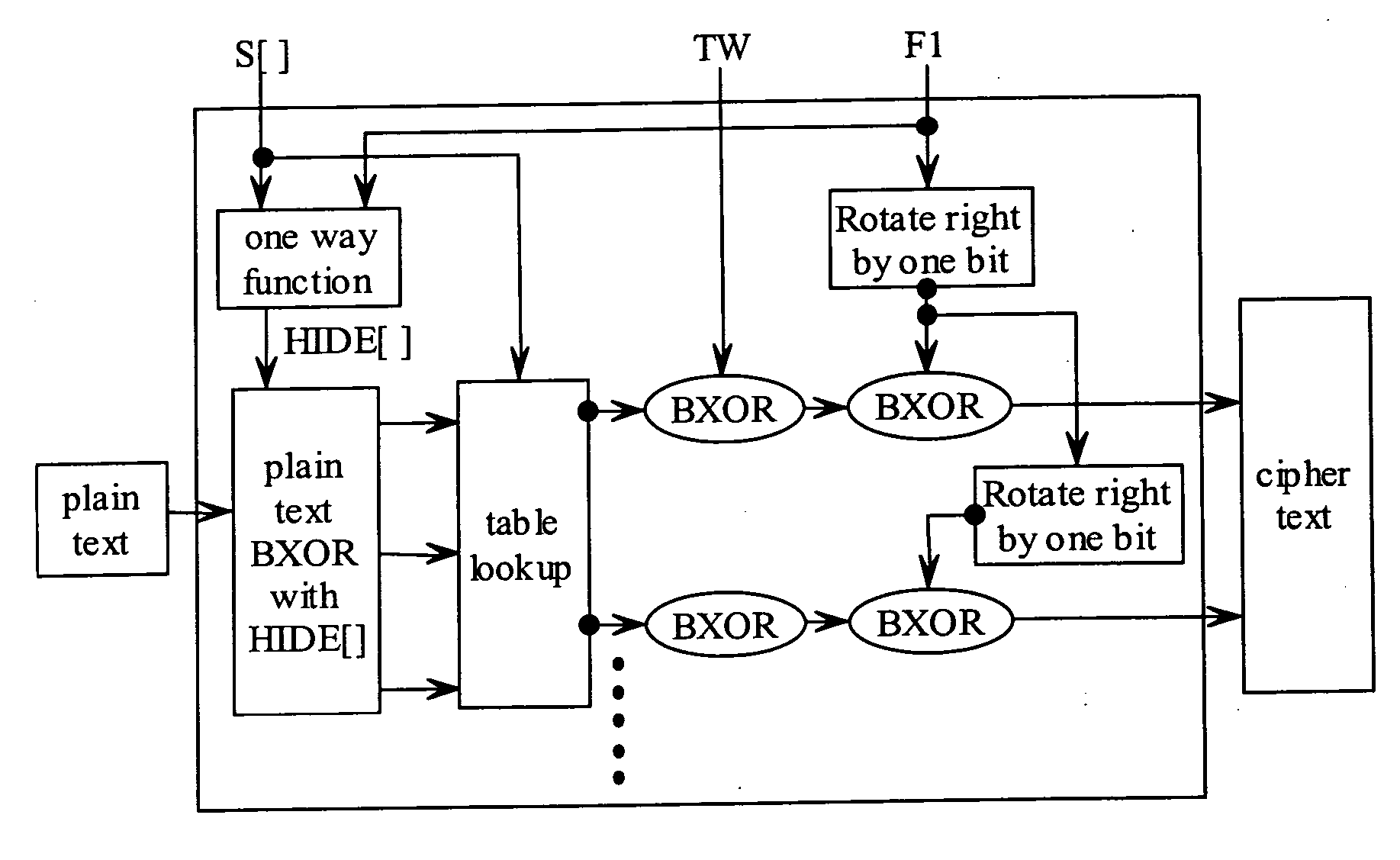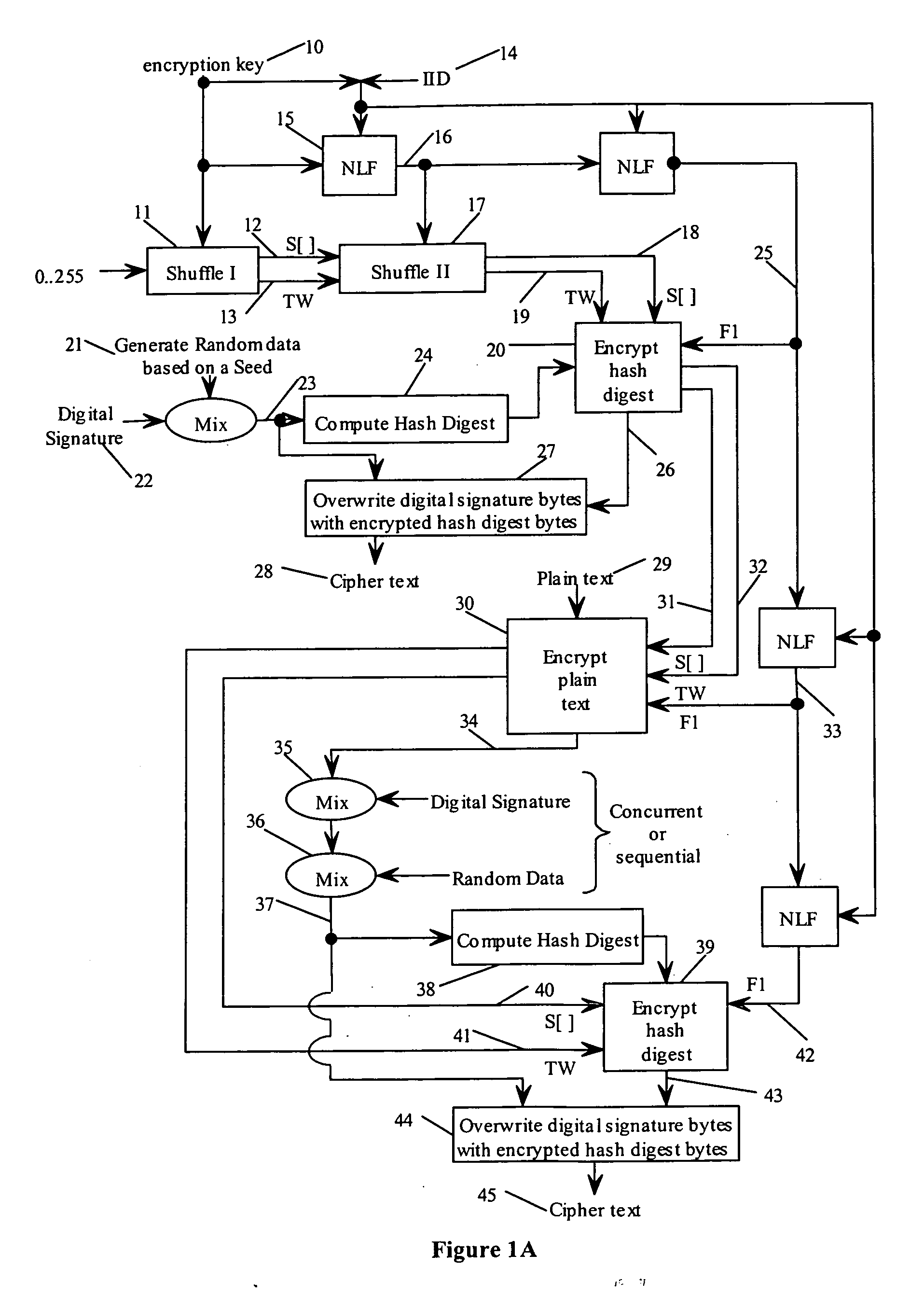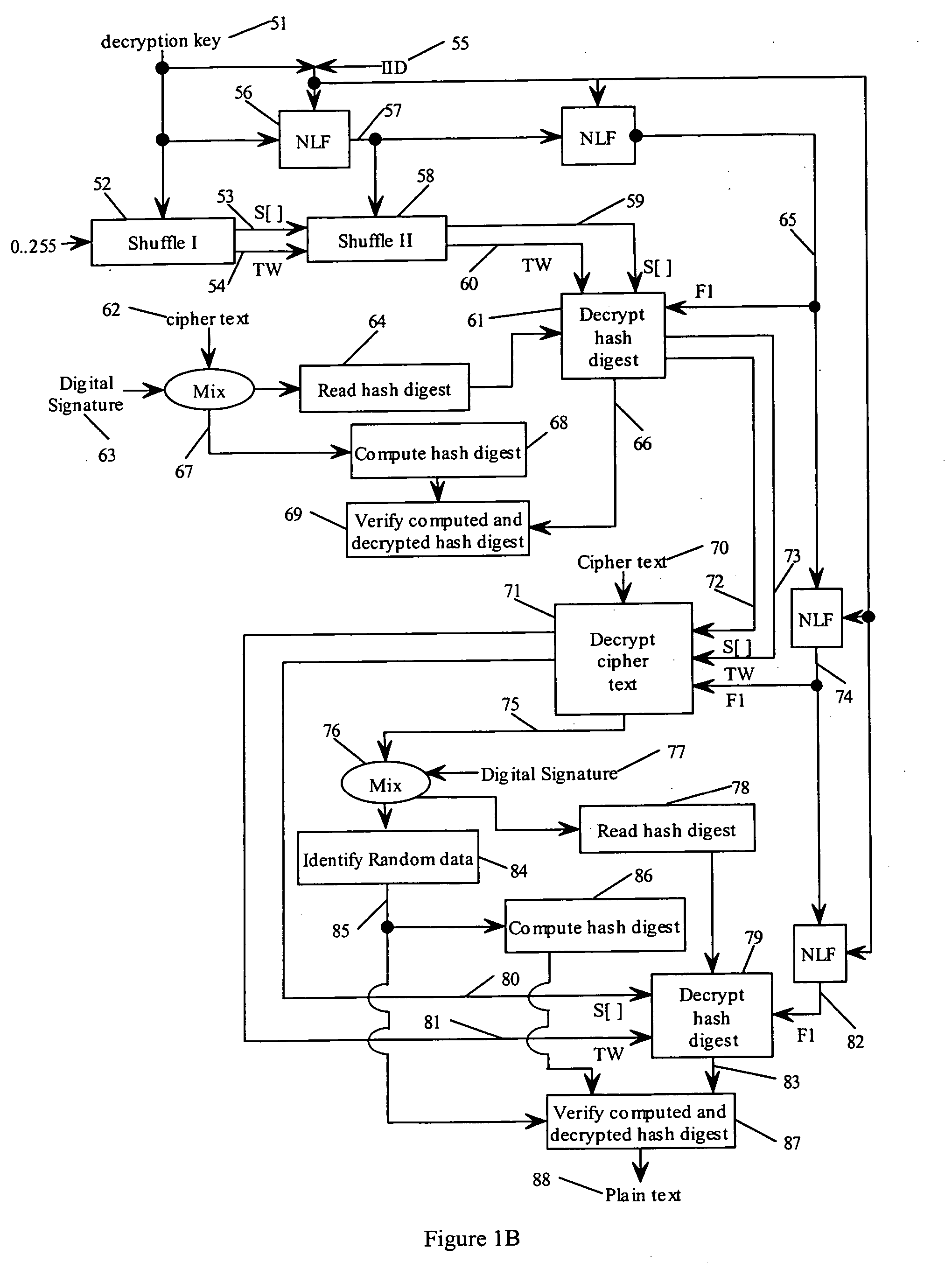State-varying hybrid stream cipher
a hybrid stream and stream cipher technology, applied in the field of cryptography, can solve the problems of slow overall system performance, complex asymmetric cryptographic algorithms, and increased processing tim
- Summary
- Abstract
- Description
- Claims
- Application Information
AI Technical Summary
Problems solved by technology
Method used
Image
Examples
first embodiment
[0190] As shown in FIG. 30, the e-mail application scenario is shown. Herein, the state-varying hybrid stream cipher is integrated into a source computing device and a mail server (see item 2000). The mail server uploads an IID and a percentage of random data (PR) to be used to source computing device (see item 2005). When encryption is desired, an encryption function loaded on the source computing device utilizes the IID and PR parameters to encrypt a message and / or attachments to the message (see item 2010). The encrypted message is sent to the mail server (see item 2015).
[0191] At the mail server, the encrypted message is received and the information associated with the message is decrypted to recover the plain text version (see item 2020). Thereafter, the mail server performs a “look-up” of a table, which has been initialized to contain other secure domains that the current mail server communicates. From the table, a new IID and PR are retrieved (see item 2025). The mail server ...
second embodiment
[0193] As shown in FIG. 31, an e-mail application scenario is shown. For this embodiment, an assumption is made that there is no problem transmitting data unencrypted from the source computing device to the mail server. Herein, the mail server contains a list of domains where data is to be transmitted securely (see item 2100). The mail server establishes an SSL transaction link with the source computing device after a DNS look up (see item 2105). It randomly generates an IID and a PR in a range, and transmits this data using SSL (see items 2110 and 2115). The mail server then encrypts the message and attachments and sends it to the recipient mail server (see items 2120 and 2125). Recipient mail server receives the data, decrypts and stores it in mailbox for the recipient (see item 2130). The rest of the process of data transfer from mail server to source computing device remains unchanged as described in FIG. 30.
third embodiment
[0194] an e-mail application scenario is contemplated but is not shown. Herein, data transfers between the source computing device and the mail server are performed as described in FIG. 30. For data transfers between the mail server and a recipient mail server, these transfers are performed as described in FIG. 31.
[0195] Although not shown, an exemplary embodiment of a secure socket layer (SSL) is contemplated. Initially, authentication operations are performed under SSL. In particular, a client computing device sends a request to connect to the secure server. In response, the secure server sends its pre-signed digital certificate to the client computing device in accordance with a handshake procedure. The client computing device verifies the digital certificate issued. For example, the client computing device may compare the information in the digital certificate with information received concerning the site (e.g., its domain name and its public key). If the information matches, th...
PUM
 Login to View More
Login to View More Abstract
Description
Claims
Application Information
 Login to View More
Login to View More - R&D
- Intellectual Property
- Life Sciences
- Materials
- Tech Scout
- Unparalleled Data Quality
- Higher Quality Content
- 60% Fewer Hallucinations
Browse by: Latest US Patents, China's latest patents, Technical Efficacy Thesaurus, Application Domain, Technology Topic, Popular Technical Reports.
© 2025 PatSnap. All rights reserved.Legal|Privacy policy|Modern Slavery Act Transparency Statement|Sitemap|About US| Contact US: help@patsnap.com



